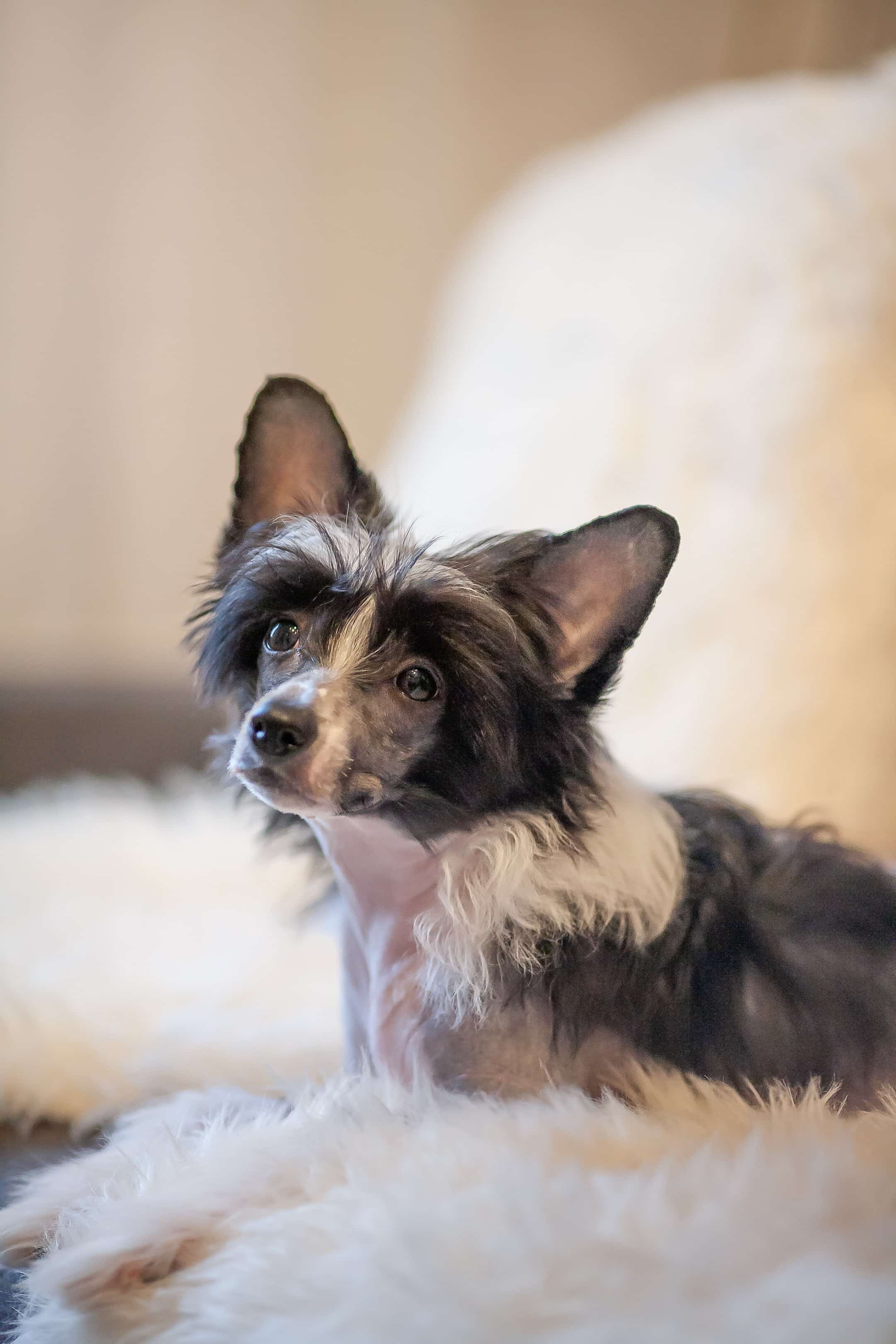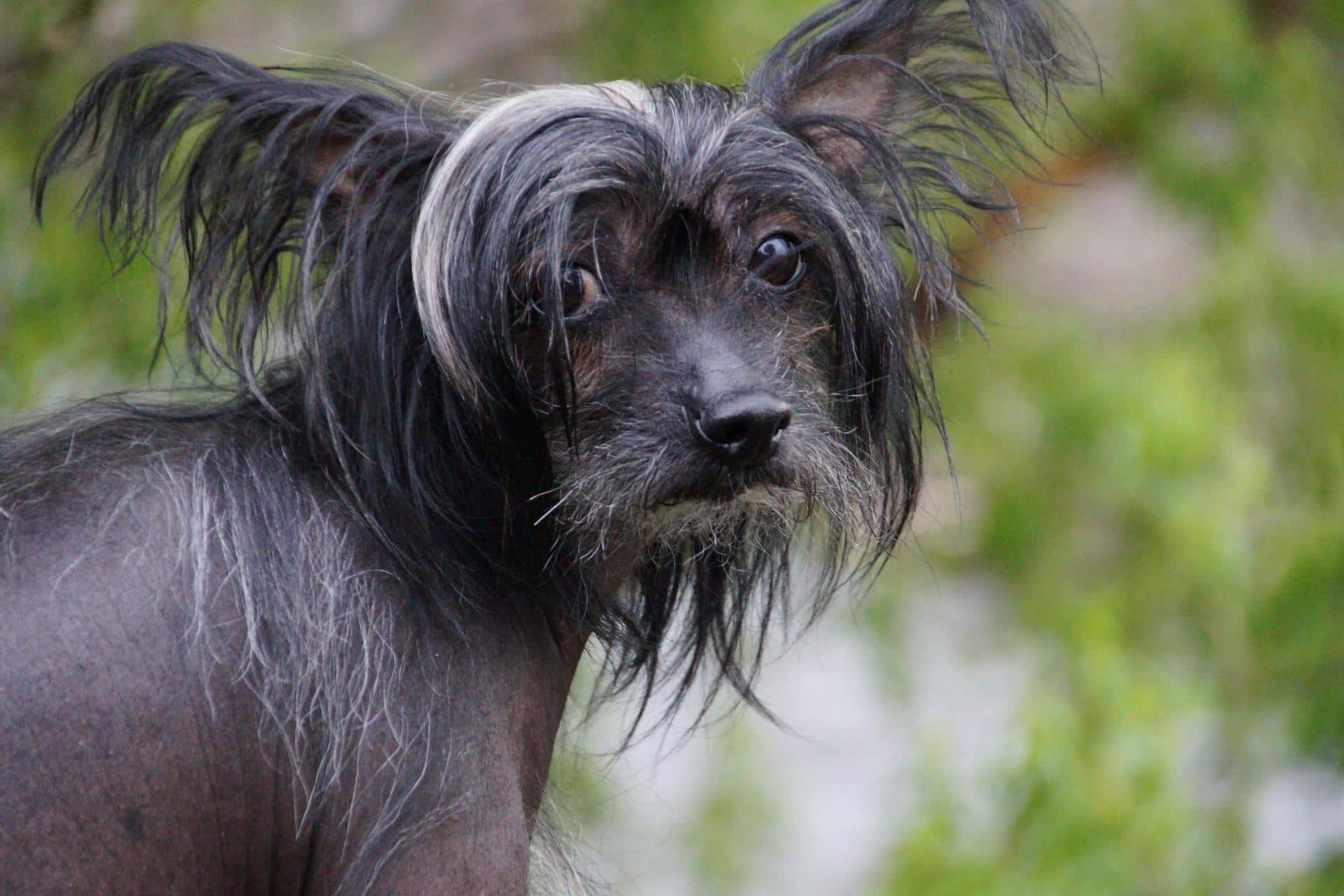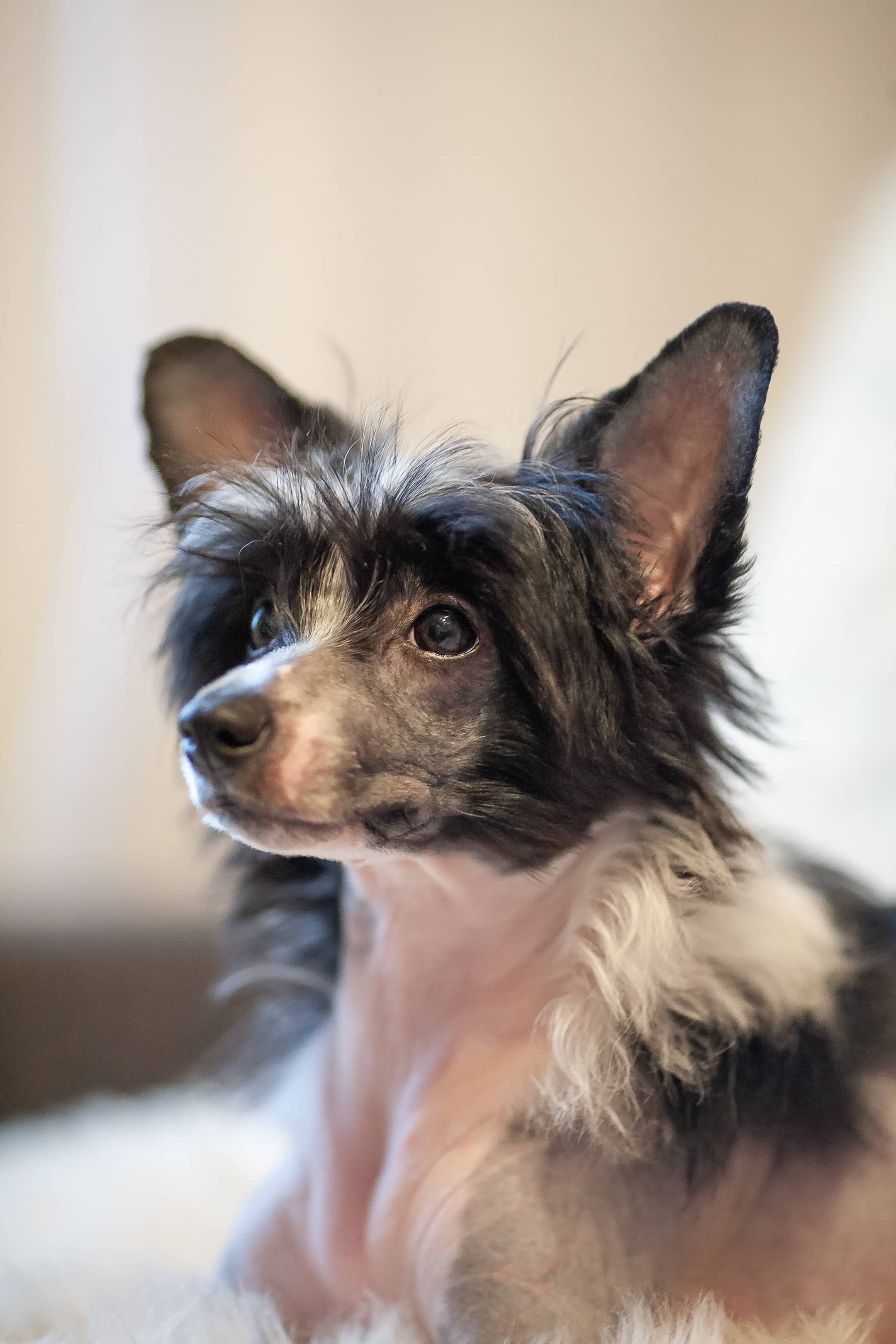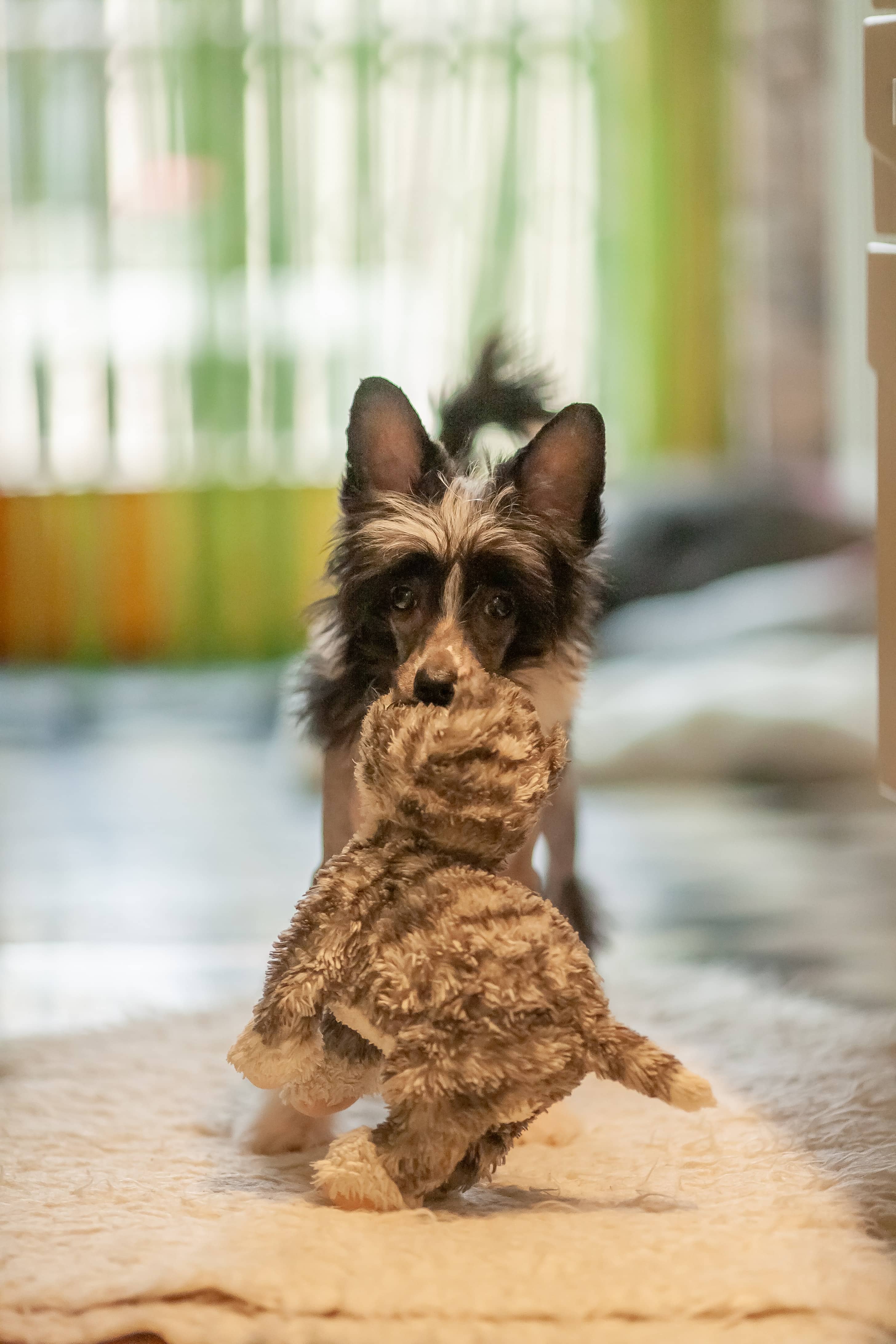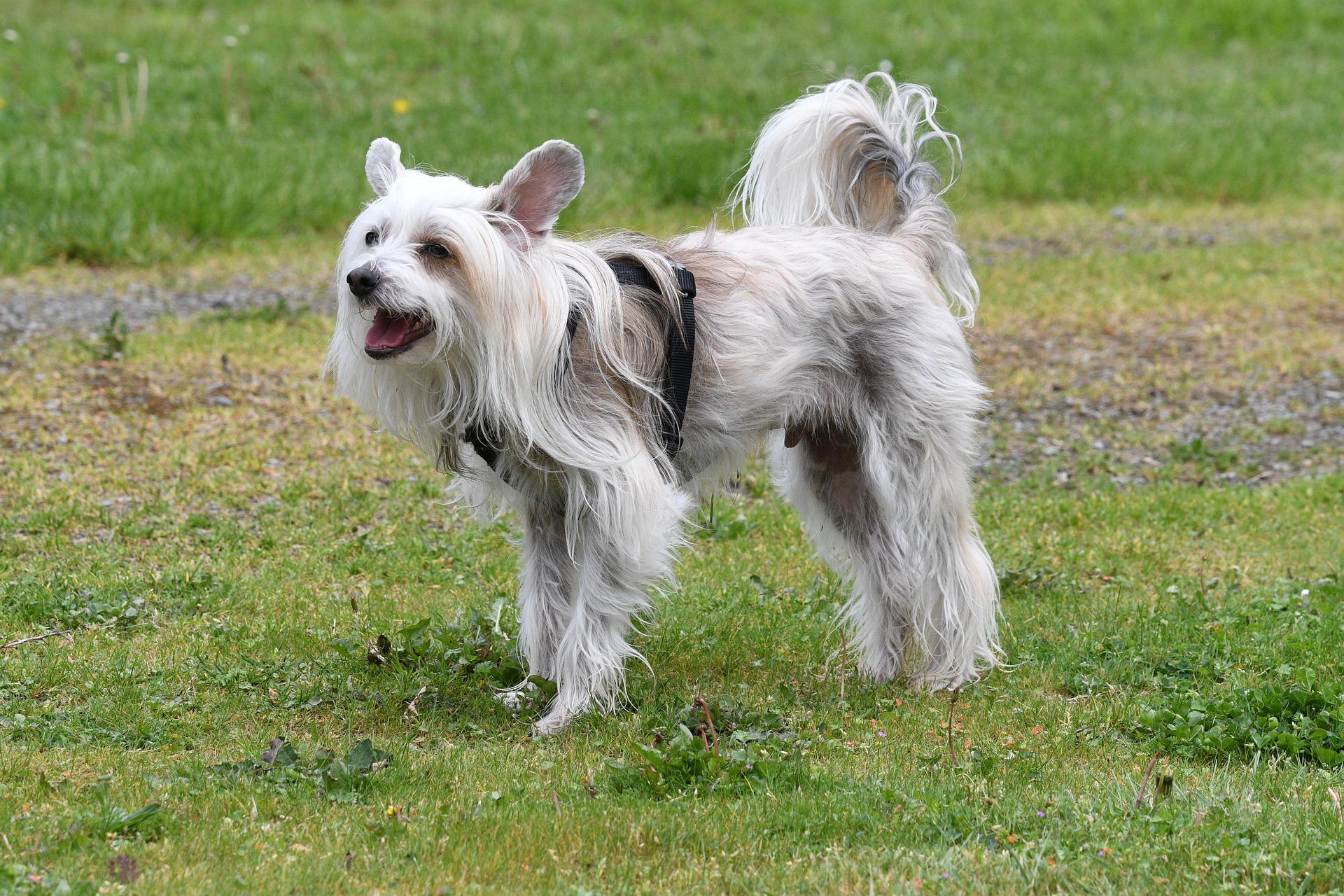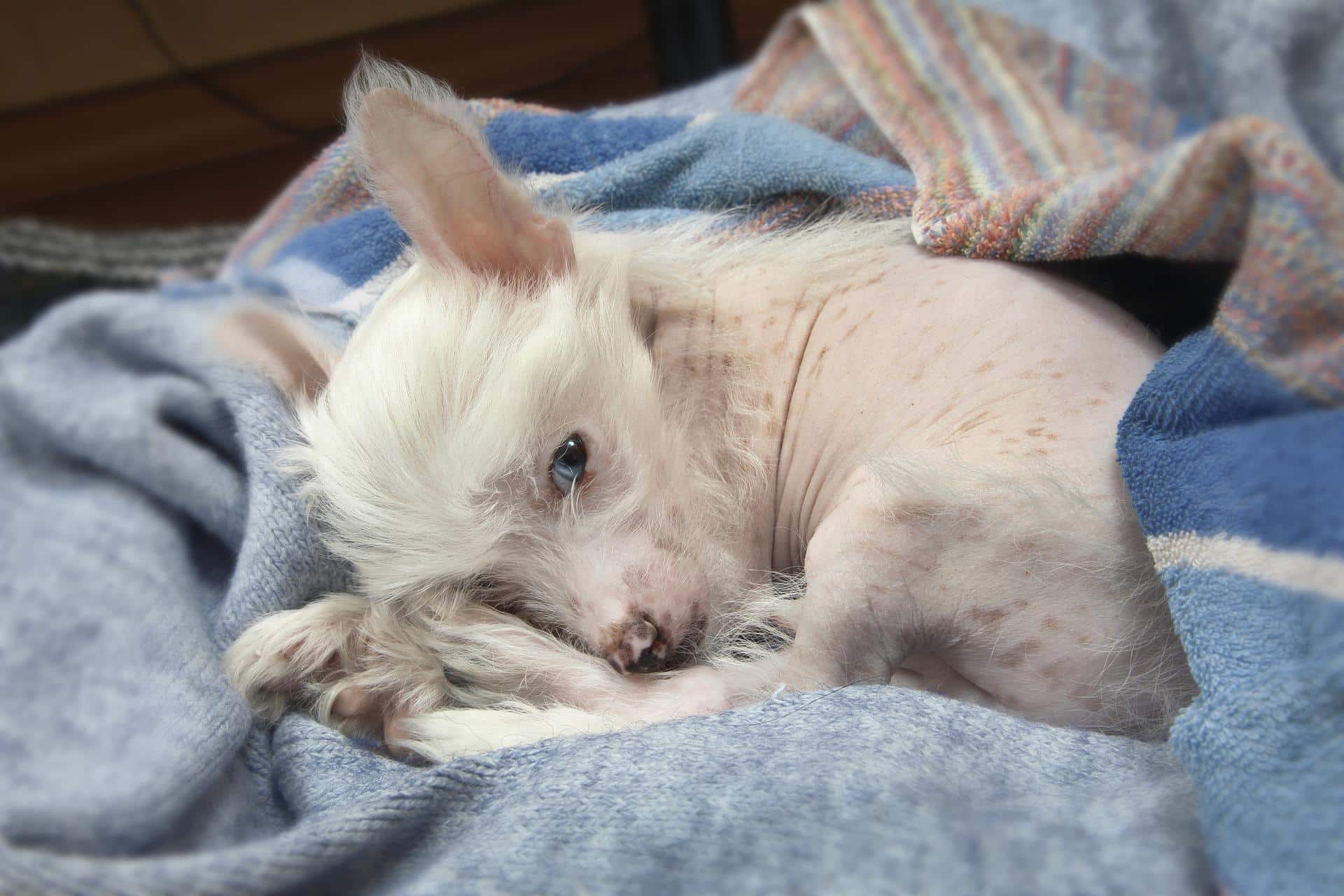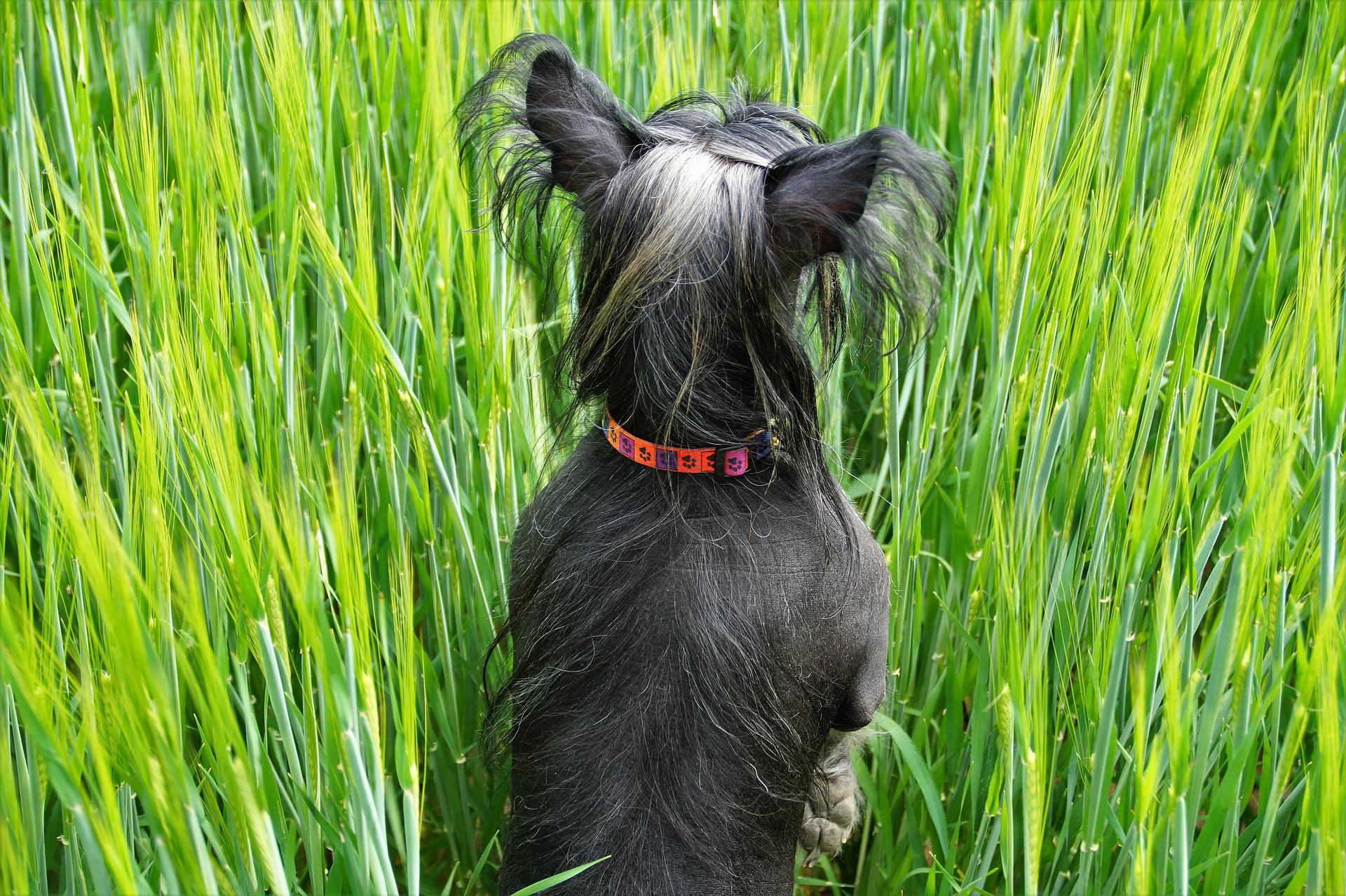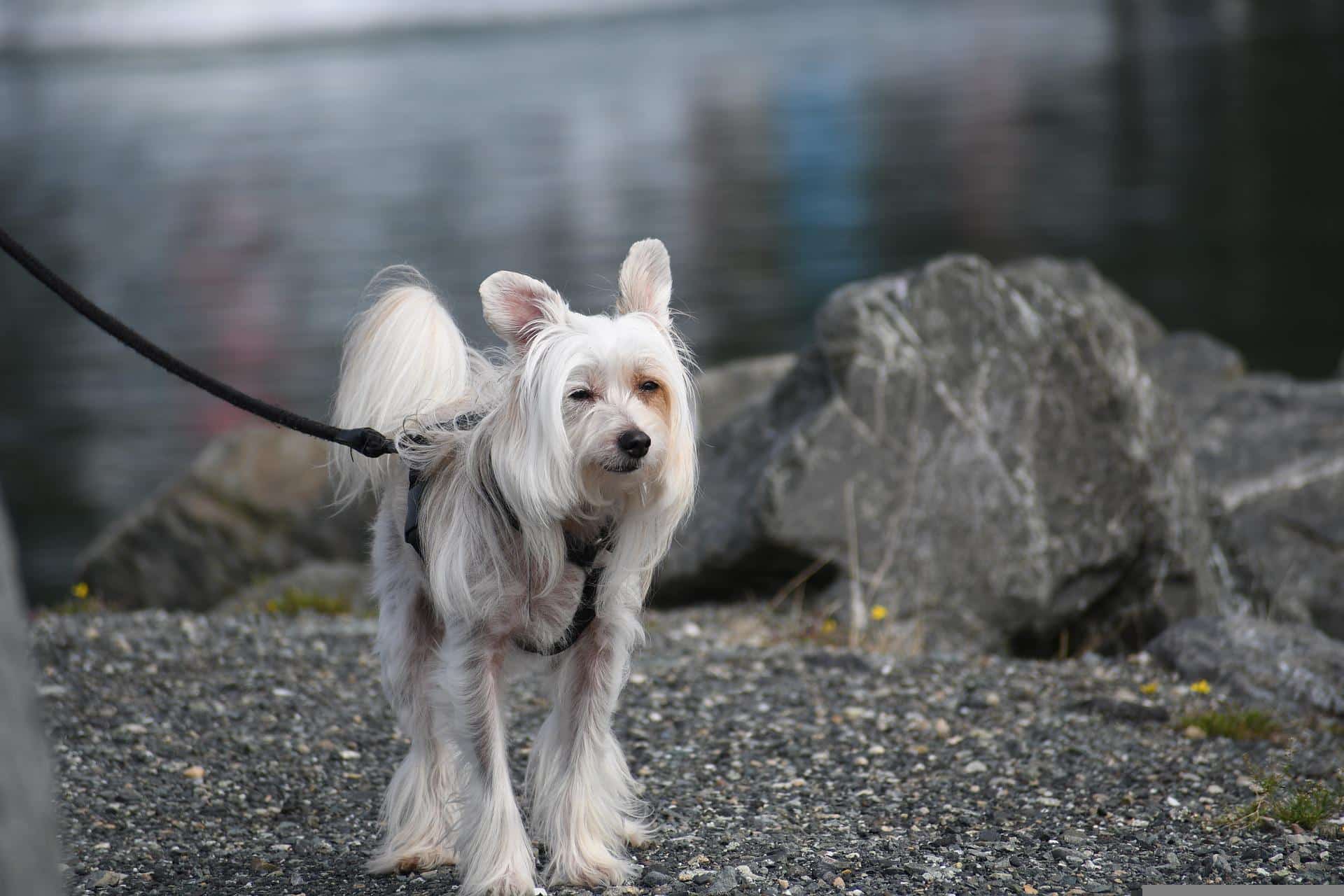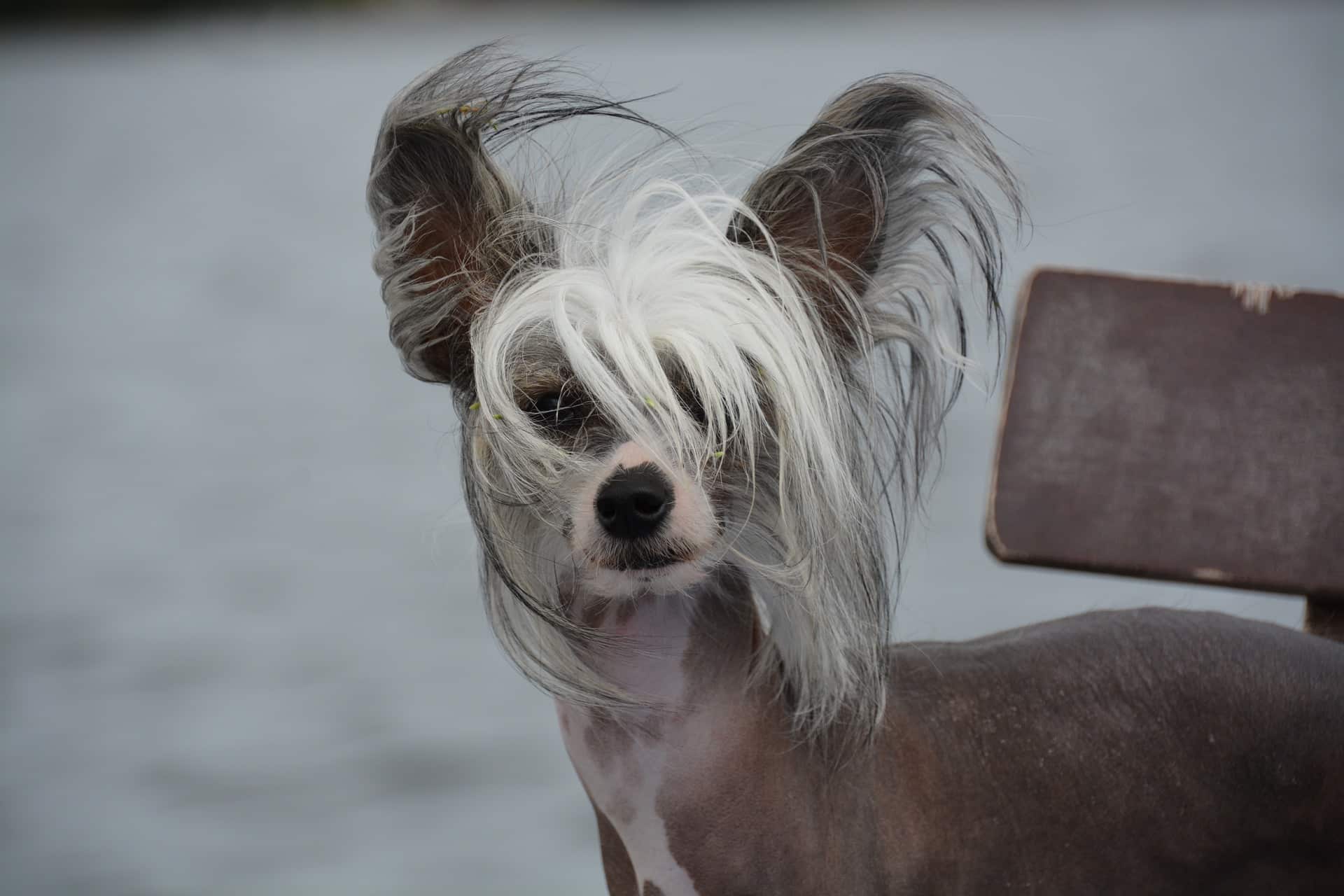
Both kinds need some maintenance. A double, extremely soft, straight coat completely covers the Powderpuff.
Although a Powderpuff's hair does not grow continually, it can grow to be fairly long when fully grown; a weekly wash and thorough brushing usually helps to avoid matting.
Brushing the dog's coat while it is dry or dirty is not suggested for an excellent coat, as a small mist of water or special grooming spray to their hair is advised before brushing.
For an easy-care coat, many Powderpuff owners trim their Powderpuff dog in a "Pony Cut," keeping long hair on the bottom of the legs, tail, head, and crest. Powderpuffs are extremely clean and odorless. Little to no shedding is characteristic of the breed.
The skin of the Hairless kind is maintained similarly to human skin, and as such, it is subject to acne, dryness, and sunburn.
When used every other day or after bathing, a hypoallergenic or oil-free moisturizing cream helps protect the skin from getting too dry.
Burns can occur in areas exposed to high UV radiation, particularly in dogs with lighter skin. Many owners apply infant sunscreen on their dogs before exposing them to direct sunlight.
Lanolin causes skin allergies in certain Chinese Crested Dogs.
Trimming and/or shaving are frequently performed to reduce unwanted hair development unless the dog is a genuine Hairless (one with almost little hair growth on non-extremities).
The Chinese Crested Dog is also recognizable by its rabbit-like foot (longer toes) as compared to the cat foot found in most other dogs.
Because Cresteds' blood vessels run deeper into their claws as a result, trimming the nails too short can cause discomfort and bleeding.
Powderpuffs like being outside for regular exercise, despite the fact that they're not a highly energetic breed. This dog excels in obedience sports due to its high intelligence.
Consistency is essential; yet, this breed can be sensitive and should be trained gently. The Powderpuff excels at both learning and doing tricks.
Many congenital disorders that plague other toy breeds do not affect the Powderpuff.
They are, nevertheless, predisposed to certain of the mentioned disorders. Lens luxation, glaucoma, and PRA (Progressive Retinal Atrophy), luxating patellas, and Legg-Perthes disease are all examples of eye issues.
The Powderpuff should have entire dentition, with no missing or crooked teeth, as is acceptable in their Hairless relative.
The Chinese Crested Dog has what is known as a "primitive mouth." This indicates that the majority of their teeth, such as their canines, are pointed.
Cresteds with hairless coats are prone to the bad dentition.
Missing or crowded teeth, as well as teeth prone to decay if not properly cared for, are examples of poor dentition.
The majority of Powderpuff dogs have little, if any, dental problems.
Luxating patellas (falling kneecaps) are another common hereditary abnormality in small dogs, however, they can also be created by an unfortunate fall.
Weak knee ligaments and tendons, as well as deformed (too thin) patellar grooves, causing the patella to fall sideways out of its channel.
As a result, the leg 'freezes,' with the foot elevated off the ground. A dog with such a condition may be plagued by discomfort and lameness on a regular basis or just on rare occasions.
The patellar ridges can wear down over time, making the fissure thinner and leading the dog to grow increasingly lame.
Although surgery is the most frequent treatment option for luxating patellas, it is not always needed for every dog with the problem.
The breed's eyes are a source of worry, with several suffering from Primary Lens Luxation, a painful and blinding genetic eye illness (PLL).
The Chinese Crested Dog can also suffer from at least two types of Progressive Retinal Atrophy (PRA), which can lead to blindness.
There is a genetic test for PLL and one of the variants of PRA to establish whether a dog is a carrier, clear, or afflicted PRCD (Progressive rod-cone degeneration) -PRA.
Because the PRCD-PRA test can only detect the afflicted or carrier status of only one type of PRA, breeders and owners should still undergo frequent eye tests by veterinary ophthalmologists.
Another eye condition afflicting the breed is Keratoconjunctivitis sicca, popularly known as dry eye syndrome (DES).
Progressive Retinal Atrophy (PRA)- is a kind of degenerative eye disease. Blindness from PRA is a gradual process caused by the loss of photoreceptors in the rear of the eye. Years before the dog displays any indications of blindness, PRA can be detected. It is recommended to have an early ophthalmologic check for your dog.
Chinese Crested dogs can also suffer from Legg–Calvé–Perthes syndrome, which causes the tip of the femur (thigh bone) to deteriorate.
The problem appears to be caused by a lack of circulation to the region surrounding the hip joint.The bone at the top of the femur collapses and dies when the blood supply is limited, and the cartilage layer around it cracks and deforms. The condition usually manifests itself while the puppy is young (approximately five and eight months of age); symptoms include discomfort, limping, or lameness.
- Glaucoma-an eye illness that affects both dogs and humans, is a painful disease that can lead to blindness if left untreated. Squinting, watery eyes, the cornea turning blue (the transparent front section of the eye), and redness in the whites of the eyes are all symptoms.Pain is rarely observed by pet owners, despite the fact that it is there and can be intense. In severe situations, the eye may appear enlarged or swollen, as if it is popping.
- Chinese Crested Dogs, like Kerry Blue Terriers, can develop Canine Multiple System Degeneration (CMSD), also known as Progressive Neuronal Abiotrophy (PNA). This is a progressive mobility condition that starts with cerebellar ataxia between the ages of 10 and 14 weeks. Affected dogs have trouble starting movements and commonly fall after 6 months of age. The relevant gene has been located on canine chromosome 1.
- The breed has been linked to allergies and autoimmune illnesses. Some dietary allergies can result in skin eruptions such as blackheads, pimples, and dryness. This breed has been shown to be allergic to chicken, which is why many owners choose a chicken-free or homemade diet. Because of the gravity of these diseases, which might result in the dog's unexpected death, breeders and owners must treat this properly in order to prevent it from becoming an issue for the breed.


